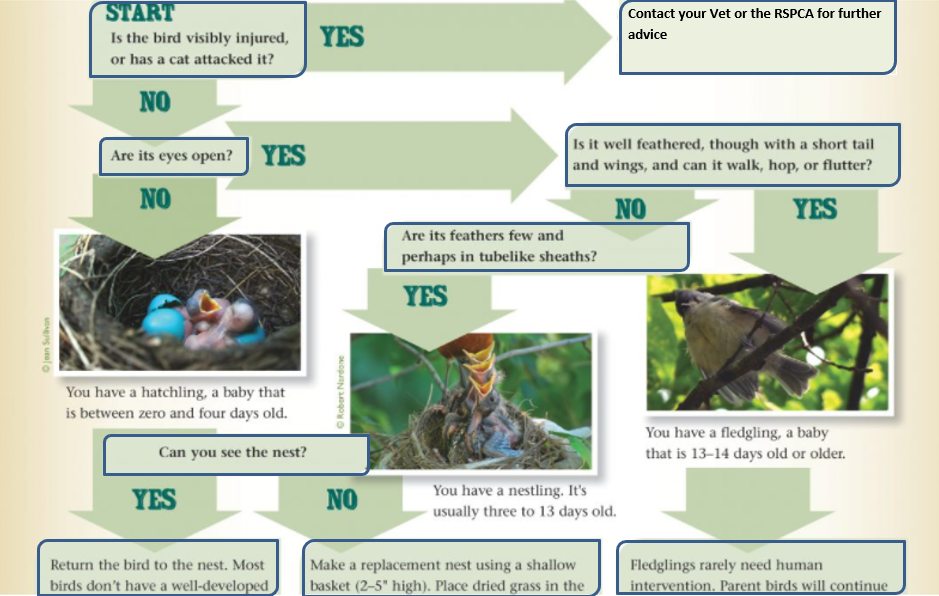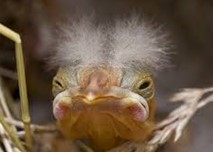 You may have noticed when out and about on your walks that the birds are out trying to woo potential mates, or you may have seen birds sitting in nests. You may have even been unlucky enough to notice that Magpie swooping season is certainly in full swing! This is all because breeding season for birds in Brisbane is during July and December, and egg laying can happen fairly quickly after mating.
You may have noticed when out and about on your walks that the birds are out trying to woo potential mates, or you may have seen birds sitting in nests. You may have even been unlucky enough to notice that Magpie swooping season is certainly in full swing! This is all because breeding season for birds in Brisbane is during July and December, and egg laying can happen fairly quickly after mating.
You may get lucky enough to see baby birds from afar, up in their nests and calling noisily to their parents for more food! But what happens if you find a baby bird on the ground?
It is not uncommon to come across baby birds on the ground and this can be due to several reasons. Predator attacks and storms can cause damage to nests and cause young to fall to the ground. There is also a very important developmental stage that will cause them to spend time on the ground that many people are unaware of taking place – they are learning to fly and strengthening those muscles!
Assess for injuries or danger.
If you have found a baby bird on the ground, try to assess it for injuries. It is ok to pick a baby bird up if you believe it is injured or could be in danger. It is a myth that parents will reject their young if a human has touched it, also- fun fact: birds don’t have a very good sense of smell.
You can pick the baby up in a small hand-towel if you have one available. Check that the legs look ok and don’t appear to be broken dislocated (swollen, bloody, sitting at an odd angle compared to the other one, or isn’t completely limp). Also check wings, that one isn’t held lower than the other – indicating a possible break or dislocation. Gently unfold the wings and look for wet patches or blood on the wings and the abdomen.
Well/ healthy baby birds should still try to move, and even make some noise.
If you discover that the bird is injured/ or appears unwell, please place it in a secure box or container and contact the nearest vet. The vet staff will help you with further instructions and likely ask you to bring the bird to them for first-aid. All vets will provide first-aid to wildlife at no cost to the public. We often see many baby birds coming in and out of here at McDowall Vets.
If the baby bird can be treated and rehabilitated, after careful assessment by one of our lovely vets, we will then call for a wildlife expert! We will usually contact the RSPCA and they will assign an appropriate and experienced carer to collect the baby from us. If the baby bird can be re-released or reunited with its family, they will attempt to do so once there is no further threat to its life, this is why we like to take details when you come in with an injured bird.
Is it too young? Or is it meant to be on the ground?
The Brush Turkey:
 Here in Queensland we do have one baby bird in particular that rarely needs to be rescued. Brush Turkey chicks are independent from the time they hatch! So it is normal for these little guys to be wandering around and going about their lives. Unless it is injured, you can leave them be.
Here in Queensland we do have one baby bird in particular that rarely needs to be rescued. Brush Turkey chicks are independent from the time they hatch! So it is normal for these little guys to be wandering around and going about their lives. Unless it is injured, you can leave them be.
The species of a baby bird can be very difficult to identify. We have over 630 species of birds in Queensland and they can all start off looking quite similar and then change drastically as they grow and their feathers develop. We can identify what stage of development the baby bird is at by observing a few key features and/ or behaviours.
Hatchling:
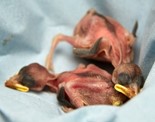 Hatchlings use a hardened bump on the end of their beak to break out of their egg. A hatchling is a new born, aged between 0 to 3 days old. They are mostly naked of feathers and fluff with their eyes closed and are completely helpless. Warmth is very important!
Hatchlings use a hardened bump on the end of their beak to break out of their egg. A hatchling is a new born, aged between 0 to 3 days old. They are mostly naked of feathers and fluff with their eyes closed and are completely helpless. Warmth is very important!
If the hatchling appears injured, follow the previous steps and phone the vet. If the hatchling appears healthy, it may have just fallen from the nest and its parents could still be around.
Given that the baby is so vulnerable at this stage, the nest will not likely be far away. Try to scan the area for a nest and see if you can see parents around. If it is safe to do so, you can try to put the baby back in the nest. If you cannot reach the nest, or not sure where it is, you can make a new nest and place the hatchling inside. See ‘building a nest’ further along in this blog. Observe the nest from a distance and if the parents do not appear in an hour, then the hatchling will need to be taken to the nearest vet.
Nestling:
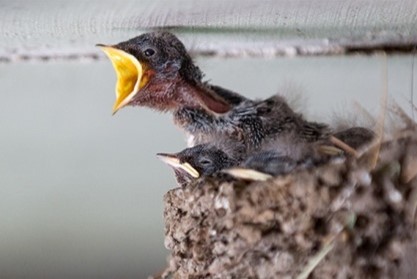 A nestling is a baby bird generally between 3 and 14 days old. Most of their bare skin will be covered by fluff or pin-feathers (pin-like long structures which are the beginning of new feathers). Their eyes will be open, and in a healthy nestling – most likely their mouths as the cry for food! They still rely on their parents to keep them warm.
A nestling is a baby bird generally between 3 and 14 days old. Most of their bare skin will be covered by fluff or pin-feathers (pin-like long structures which are the beginning of new feathers). Their eyes will be open, and in a healthy nestling – most likely their mouths as the cry for food! They still rely on their parents to keep them warm.
If the nestling is un-injured, it is best to treat it as we would a hatchling. Try to re-unite with its parents. Again, if no parents are seen in an hour, then its off to the vet to be checked and then assigned a carer.
Building a nest:
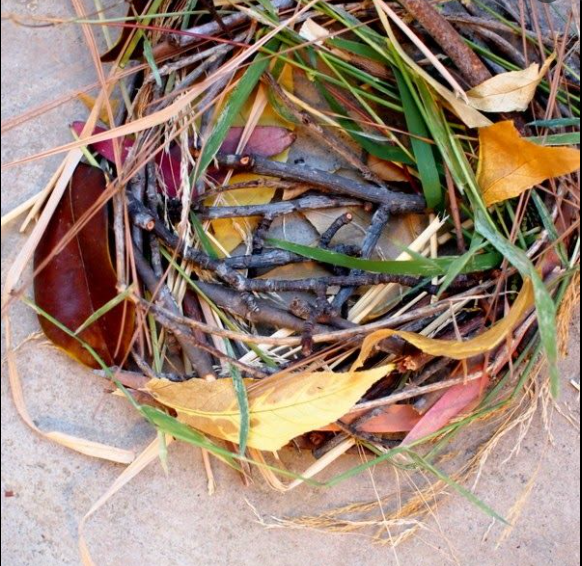 Unsurprisingly, you may be new to the art of nest building – but that’s ok, we’ve got you covered:
Unsurprisingly, you may be new to the art of nest building – but that’s ok, we’ve got you covered:
• A basket or a bucket will make a perfect starting point.
• It is very important that the ‘nest’ base has drainage holes. We do not want it to fill up with water as soon as it rains. Try to find a container that you can put holes into if you cannot find one that is already holey enough.
• A container or basked with a handle will help you later to secure it to a branch.
• Layer the inside with dry leaves and grasses to provide some natural cushioning and warmth for the baby bird.
• Secure the new ‘nest’ nearest to the actual nest, or in a tree near to where you found the baby bird. Make sure it is high enough and out of the reach of predators (6 to 8ft is ideal).
• It is important that the parents can also get in and out of the new nest easily. You can either angle/ tilt the container/ basket so that they can walk in and out, or you can put a stick in there so that they can climb in and out.
Fledgling:(It’s normal for me to be on the ground!)
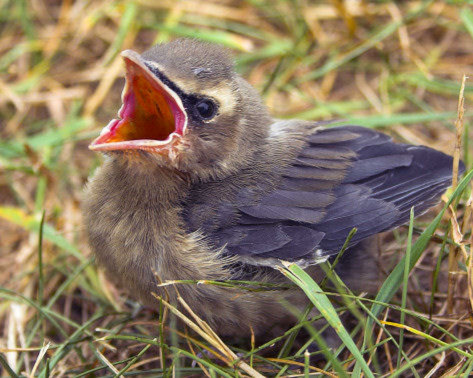 A fledgling is a baby bird that is learning to fly. They are usually very active, seen hopping and flapping around and strengthening their muscles! They should be able to perch on low branches, or you can test this on your finger. They should be fully feathered with their flight feathers, but might still have a few straggly tufts of fluff here and there.
A fledgling is a baby bird that is learning to fly. They are usually very active, seen hopping and flapping around and strengthening their muscles! They should be able to perch on low branches, or you can test this on your finger. They should be fully feathered with their flight feathers, but might still have a few straggly tufts of fluff here and there.
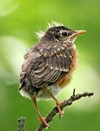 The parents are often nearby and are still feeding and protecting their little one. Fledglings can take up to 2 weeks to start to fly properly, so it is normal for them to be hanging around on the ground between training sessions!
The parents are often nearby and are still feeding and protecting their little one. Fledglings can take up to 2 weeks to start to fly properly, so it is normal for them to be hanging around on the ground between training sessions!
We often have well-intentioned members of the public bringing in fledglings, mistakenly identifying them as injured baby birds. Nature knows best and the best care is with the parents where medical intervention is not needed. So our advice in the cases of bird-napping of a fledglings is…
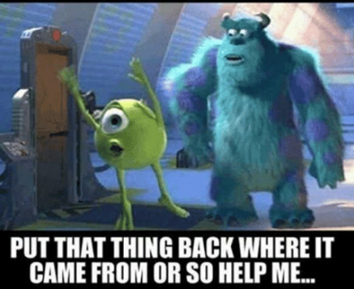
If in doubt, call us at McDowall Vet (07) 3353 6999 and we can talk you through how to check a baby bird and how to identify at what stage it might be at. You do not need to make an appointment to bring wildlife in, we just need a few minutes to take details of where the animal or bird was found (in hopes to reunite or re-release in the future).
You can also call the RSPCA on 1300 264 625

